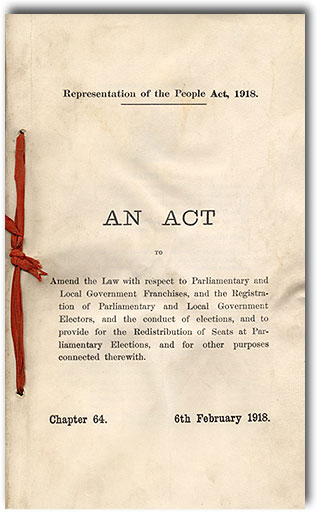THE REPRESENTATION OF THE PEOPLE ACT 1918
Previously, only men had been entitled to vote in parliamentary elections.
The 1918 Representation of the People Act was the start of female suffrage in Great Britain.
The bill was passed by an overwhelming majority in the House of Commons (385 for to 55 against) – an element of support that surprised the Suffragettes and other suffragist movements.
The 1918 Representation of the People Act gave women of property over the age of 30 the right to vote – not all women, therefore, could vote – but it was a major start.
A general assumption is that the act was a ‘reward' for the vital work done by women during World War One. Women in France did equally as important work in World War One but did not receive the right to vote after the war.
The 1918 Representation of the People Act gave all men over the age of 21 the right to vote (and aged 19 if the men had been on active service in the armed forces).
Therefore, politically women were still not the equal to men in Britain even after the 1918 act.
Women achieved full equality regarding suffrage in 1928.
extracts from HISTORY LEARNING SITE
SOURCE: NATIONAL ARCHIVES |
|---|
P.S.: pages created by Mrs GELY for her students
